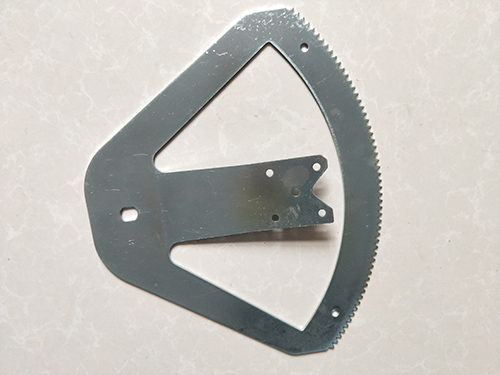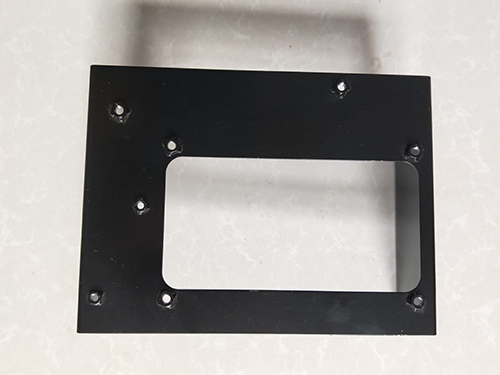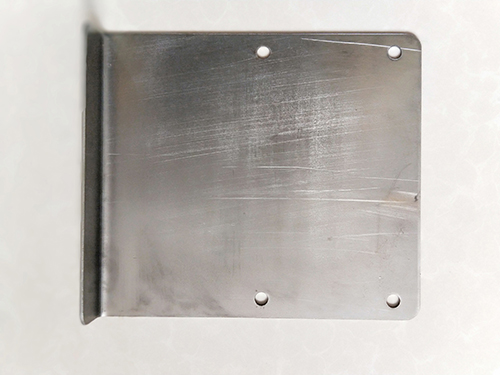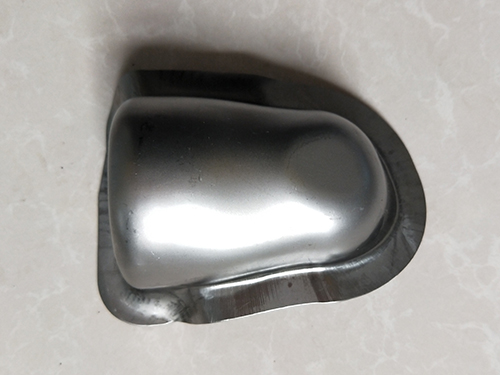Technical methods and processing procedures for automotive stamping parts
In recent years, with the booming development of the automotive industry, people have put forward requirements for the appearance, performance, structure, and other aspects of automobiles. Especially, the quality of the overall appearance of the vehicle is crucial, as it determines the customer's first sensory impression of the vehicle. The quality of stamped parts directly determines the overall appearance quality and dimensional stability of the vehicle product. Therefore, there are high requirements for the quality of stamped parts. Stamping engineering, as a process in the production of complete vehicles, uses equipment and molds to deform or separate the sheet metal, thereby directly affecting the production efficiency and cost of the required components for the vehicle. Therefore, as a key point in production process control, quality management plays a crucial role. The following focuses on analyzing several factors that affect the quality of stamped parts.
1、 Maximize the problem in the early stage of 3D numerical modeling design
Synchronous Engineering (SE) technology, which utilizes 3D modeling, simulation, and finite element analysis software to maximize the design of automotive products in the early stage of 3D numerical modeling design, shortening the time required for later mold manufacturing. SE technology integrates the strengths of automotive design companies and mold manufacturing companies, taking into account potential issues that may arise in various stages of product manufacturing during the body stage. Feasibility analysis of body design and mold manufacturing is conducted simultaneously, improving the quality of product design, reducing costs, and shortening cycles. It is currently a technological method in use. The advantages include: ① reduced variables required by the process; ② Reduced costs incurred due to design changes; ③ Shorten the product quality improvement cycle in the later stage; ④ Reduce inherent defects in stamped parts; ⑤ The delivery cycle of molds back to the factory has been shortened; ⑥ The willingness to cooperate with mold suppliers has been strengthened.
(1) The supplier will conduct an analysis in advance and adopt a simplified method for forming, ensuring the feasibility of the process.
(2) Before the design of key component molds, full process CAE simulation is adopted, and CAE reports are reviewed and controlled to minimize quality issues in the early stages. Typical problems that occur in the early stages of the project should be investigated.
2、 Utilizing soft mold trial production to further optimize data
Change the previous mode of receiving data directly into formal molds and adopt the soft mold trial production method.
In the past, direct formal molds were used, but due to immature data, it not only led to frequent changes in mold design in the later stage, wasting a lot of manpower and material resources, but also directly resulted in customer disapproval of the model after it was launched. The use of soft molds has the following advantages:
(1) The use of soft molds can verify the processability of products, stamping, and welding in advance, and improve the quality of stamped parts and white body.
(2) You can subtract the manual prototype stage that was carried out during the formal mold manufacturing process in previous car models. Shorten the normal mold cycle by 1-2 months. Thus shortening the product cycle, promoting the early launch of vehicle models, and increasing product competitiveness.
(3) Shorten the time and cost of tooling and equipment commissioning. By using soft molds to prototype the white body, problems with the white body produced by the formal mold can be identified, thereby reducing the cycle and cost of formal tooling debugging.
(4) Utilize social resources to reduce upfront investment and avoid duplicate investments.
(5) Pre validation of data avoids mold modifications caused by design changes/data errors, shortens the vehicle cycle, and reduces design change costs.
(6) Product digital modeling, keeping up with the world's standards. During the design phase of the vehicle model, it is mainly evaluated and analyzed by senior management or a few people. During the trial production phase, actual potential problems can be discovered from multiple aspects through physical verification and production, and feedback can be provided to the design.
There may be adverse phenomena in the production process of automotive stamping parts, but these are inevitable. However, if the frequency increases, the quality of the entire workpiece will decrease. Especially during stretching, defects such as flange wrinkling and sidewall wrinkling may occur due to the effect of compression deformation. This problem is relatively easy to solve, as long as the internal tensile stress of the moving plate is selected, or methods such as increasing stretching ribs and reducing the fillet radius of the concave die can be used to wrinkle. But what if the deformation of the stamped part is too large and it splits?
The quality of the edge section of the billet can be determined by using the punching method for cutting; Then, the marginal state of the billet is improved, usually by selecting an appropriate increase in material standards to effectively determine the standard for concave flanged billets, while adjusting stamping skills to avoid splitting. Secondly, the vacancies in the convex and concave molds are uniform, resulting in uniform resistance for the material to enter the mold, which is also beneficial for reducing splitting.
If the splitting is caused by stretching, it can be achieved by increasing the fillet radius of the convex and concave molds, adjusting the edge pressure appropriately, and reducing the deformation resistance of the flange deformation zone to achieve an ideal forming quality for automotive stamping parts.
At the same time as designing stamped parts, some basic principles were also proposed, with the aim of forming stamped parts and achieving the goals of improving work and reducing production costs. What are the specific issues?
Regardless of the purpose of the stamped parts, it is recommended to use ordinary materials instead of precious materials in material selection. The most commonly used method is to replace alloy steel with carbon steel. Colleagues try to use thinner sheets as much as possible, but they need to use reinforcement structures in areas with weaker stiffness, in order to reduce material costs while also minimizing impact pressure.
In terms of the shape design of stamped parts, it is advisable to adopt a simple and symmetrical shape as much as possible, in order to balance the force on the blank during stamping, which is also of great help in simplifying the machining process and improving work efficiency. Another point is that the precision of stamped parts should not be too high, otherwise it will increase the finishing process and prolong the production cycle of the workpiece.
The automotive stamping parts industry is receiving increasing attention due to its continuous development. In order for automotive stamping parts to meet standards in all aspects, they need to be inspected. The corresponding inspection method is basically the same as other products, and among the many inspection items, it is important to emphasize the inspection of defects and hardness.
There are many forms of defects in stamped parts, including pitting, pitting, scratching, cracking, wrinkling, deformation, missing holes, etc. Relevant part inspection guidelines should be used for comparison during inspection; Secondly, there are inspection tools that can be proficiently used; Also, there are samples.
Due to the fact that the main material for automotive stamping parts is mold steel, the hardness value of the sample can be determined by testing the difference between its initial velocity and the velocity after rebound. And due to the different surface layer thicknesses of stamped parts, the results are inevitably different.
Stamping is one of the important processes for producing automotive parts, and only reasonable stamping technology can play a role in improving the quality of stamped parts. Therefore, multi station stamping technology is one of them. Compared to ordinary processes, multi station stamping can achieve automation and efficiency improvement in stamping. What is its capability?
In fact, the multi station stamping process route is a multi station progressive die. In order to ensure normal feeding, the distance between the separated part of the finished stamping strip and the adjacent two steps is kept the same, otherwise it cannot be achieved. At present, more and more stamping parts are produced using this technology, which has significant advantages in production cost and efficiency.
In mold design, since there is no problem of increasing production costs after washing the stamped parts, the process can be relatively dispersed to ensure the quality of the stamped parts, while also saving manpower. So many advantages make this stamping technology commonly used in mass production.
Stamped parts undergo deformation under the action of punching force, resulting in corresponding changes in size, shape, and other aspects. For stamped parts, sheet metal, mold, and equipment are the three elements in the forming process, playing a crucial role in the forming quality of stamped parts.
From the current perspective, a large part of metal workpieces are finished products that have been stamped and pressed, such as car bodies, radiator fins, container shells, motors, electrical iron cores, silicon steel sheets, etc. When processing, as long as a composite mold is used, multiple stamping technology operations can be completed on one press, which improves the production efficiency of stamped parts.
Stamping parts have the characteristics of being thin, uniform, light, and strong, as they can be used to manufacture workpieces with reinforcing ribs, ribs, coils, or flanges to improve their rigidity, while also achieving high product quality and a high pass rate.







